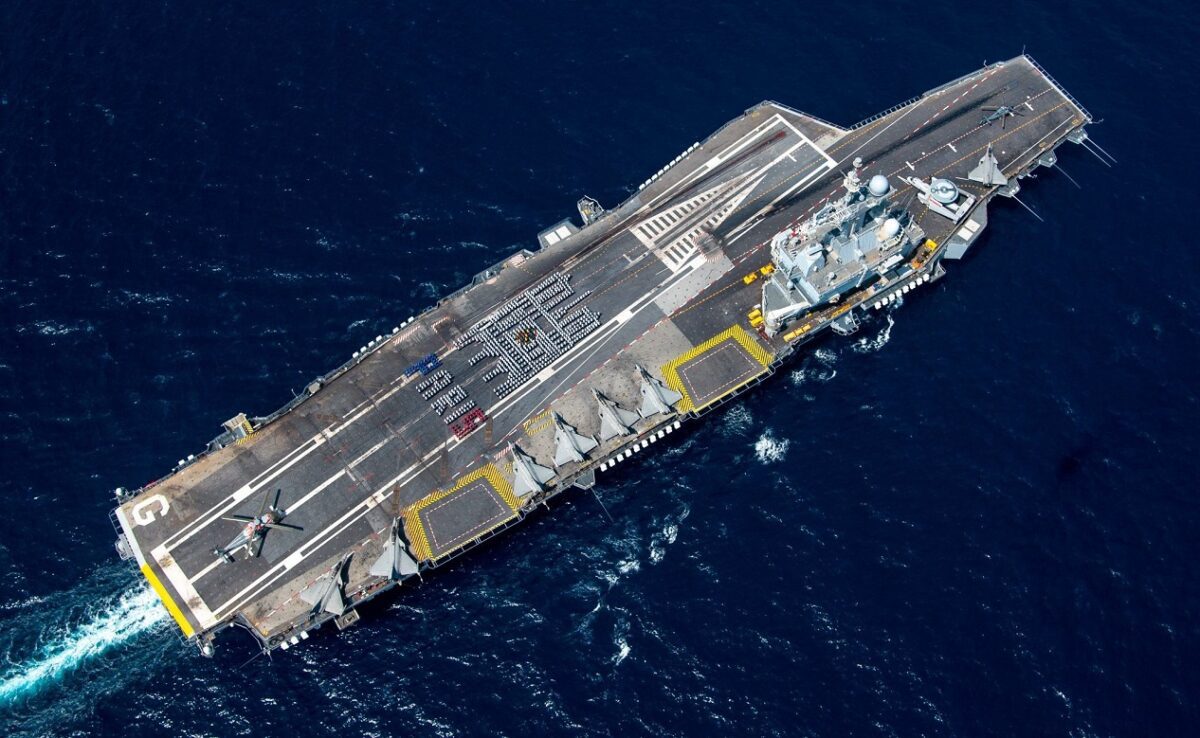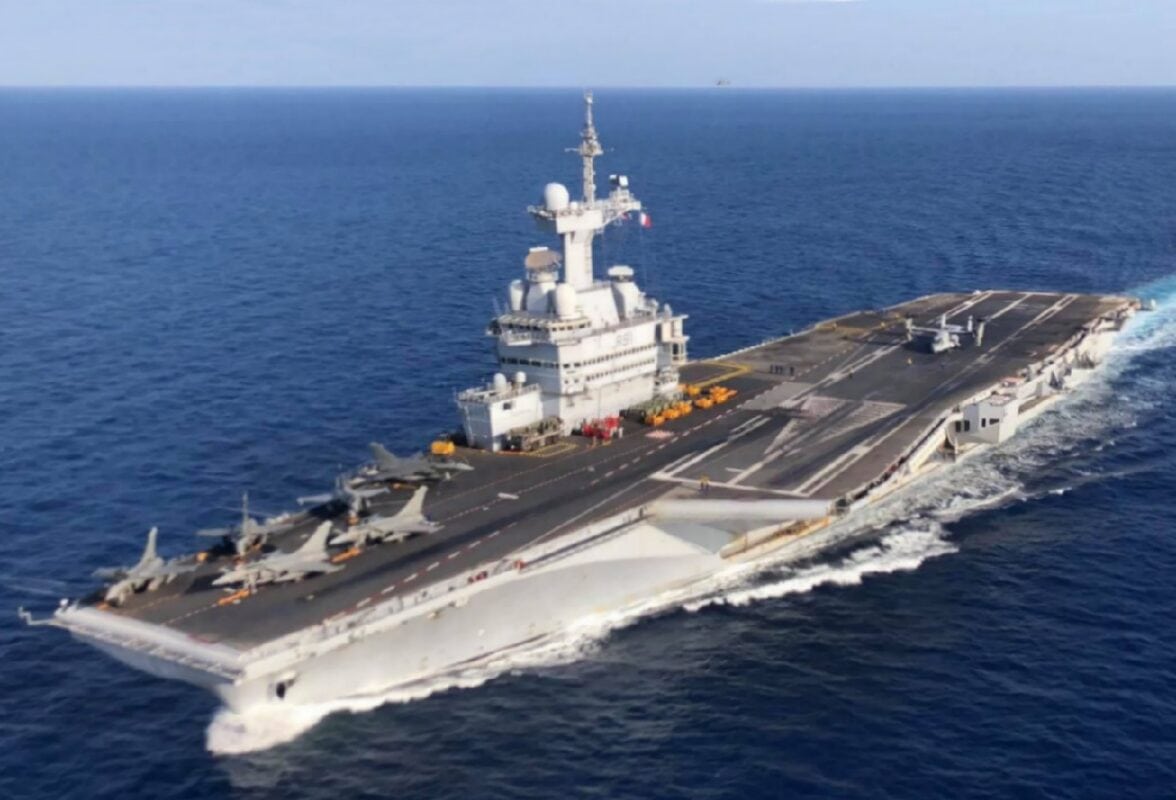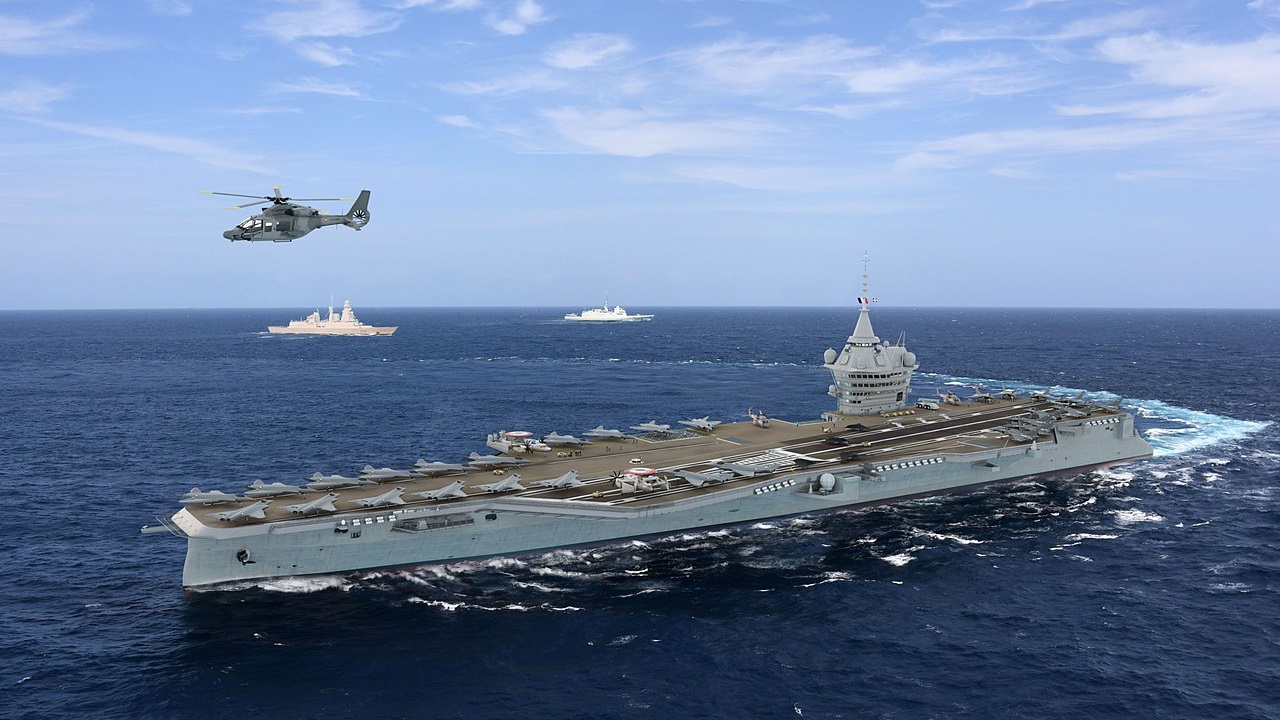PANG: What do we know about France’s new aircraft carrier? It had been more than a year since the French Navy had given any updates on the status of the PANG (porte-avions de nouvelle génération) – the “new generation aircraft carrier” – that is expected to begin construction around 2025, and scheduled to enter service in 2038, when the current flagship flattop Charles de Gaulle is due to be retired.
Finally this week, during the opening day of the Euronaval 2022 International Naval Defense Exhibition in Paris, attendees were able to see a newly unveiled mock-up of the aircraft carrier. Though the general characteristics of the future warship were largely unchanged, there has been some notable changes. The island on the flight deck has “evolved” slightly from the initial design that was first unveiled in 2020.
According to a report from NavalNews.com, the Euronaval display still featured the SeaFire radar (in four fixed panels configuration), yet the “cone” at the top of the island is gone to make way for an array of domes for satellite communication. In addition, a helicopter landing spot was added adjacent to the island, along with an area to conduct aircraft maintenance on the flight deck. Moreover, the actual shape of the flight deck has undergone a less significant modification. Those changes were made to the carrier to better accommodate a third EMALS, should it be required.
The model of the carrier was also equipped with a number of defensive weapons including SIMBAD-RC, RapidFire CIWS, VLS for Aster missiles, and the new CMLS anti-torpedo decoy launchers.
PANG: Latest Specifications
At the Euronaval 2022 defense show, the latest technical specifications for the PANG were also released. The future French Navy aircraft carrier, which will likely be the service’s flagship, will displace 75,000 tonnes under full load, while it will have an overall length of 310 meters (1,017 feet). It will operate with two or three electromagnetic catapults (EMALS), and be capable of carrying an airwing consisting of 30 new generation fighter (NGF)/Future Air Combat System (FACS) and Rafale M aircraft.
Much like the Charles de Gaulle, the PANG will be nuclear-powered – equipped with two K22 pressurized water reactors (PWR), which can each produce 220 megawatts or 300,000 horsepower. It would have nearly unlimited range and endurance. President Emmanuel Macron had essentially confirmed that fact nearly two years ago.
The “nuclear option” is notable – as Charles de Gaulle is currently the only nuclear-powered aircraft carrier to serve outside the U.S. Navy.
Bad French Track Record
Though this latest update suggests the carrier is on track, the schedule could be extremely tight. Technically, the PANG is still in its research and development (R&D) stage, as current plans call for the first steel cut – which will officially begin the ship’s construction – to take place in 2025. The French Navy’s goal is for the warship to begin sea trails in 2035 with formal commissioning to take place in 2038.

French Aircraft Carrier Charles de Gaulle.
However, the construction of the Charles de Gaulle was met with numerous delays. As a result, France could be left without a carrier – a situation not that different from what the UK’s Royal Navy faced after it retired the last Invincible-class carrier, HMS Illustrious, in 2014. For nearly seven years the Royal Navy was left without a carrier – the first time in a century!
Paris likely hopes to avoid a similar fate, and it does appear that the PANG is now seeing some progress. Whether it is enough has yet to be determined.

190424-M-BP588-1005 U.S. 5TH FLEET AREA OF OPERATIONS (April 24, 2019) A U.S. Marine MV-22 Osprey assigned to the 22nd Marine Expeditionary Unit sits on the flight deck of France’s Marine Nationale aircraft carrier FS Charles De Gaulle (R 91). This was the second time that Ospreys have landed aboard the French vessel. Marines and Sailors assigned to the 22nd MEU and Kearsarge Amphibious Ready Group are currently deployed to the U.S. 5th Fleet area of operations in support of naval operations to ensure maritime stability and security in the Central region, connecting the Mediterranean and the Pacific through the western Indian Ocean and three strategic choke points. (U.S. Marine Corps photo by Maj. Joshua Smith/Released)
A Senior Editor for 19FortyFive, Peter Suciu is a Michigan-based writer who has contributed to more than four dozen magazines, newspapers, and websites with over 3,000 published pieces over a twenty-year career in journalism. He regularly writes about military hardware, firearms history, cybersecurity, and international affairs. Peter is also a Contributing Writer for Forbes. You can follow him on Twitter: @PeterSuciu.

